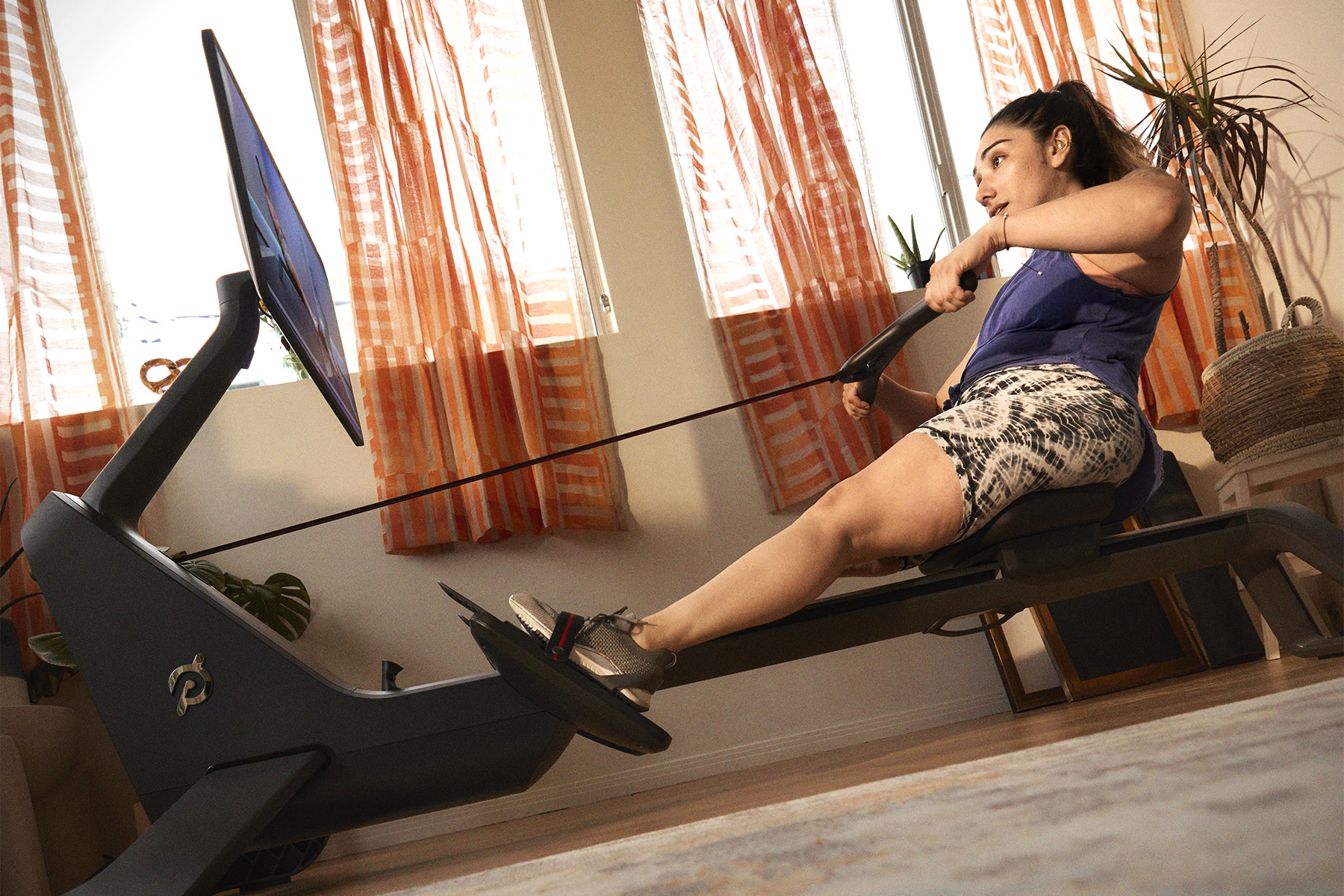
5 Common Rowing Mistakes and How to Fix Them
Here’s what you need to know to ensure you’re getting an efficient full-body workout.
By Alyssa Sybertz•
When it’s done with proper form, rowing on Peloton Row is a dynamic, total-body workout. But achieving that proper form can feel a little awkward and unnatural at first, especially for beginner rowers. We spoke with some of our Peloton rowing instructors to uncover the most common mistakes new rowers make and the simple tweaks that will improve your form and turbocharge your workout.
Mistake #1: Trying to Pull With the Arms Too Soon
One of the most common misconceptions about rowing on a rowing machine is that it’s primarily an upper-body workout. Instead, you want to think about pulling with the arms as the “finishing touch of the stroke,” says Peloton instructor Alex Karwoski. “Shift to thinking about the motion as less pull, more push. Rather than trying to ‘feel’ the effort by using the arms right off the front end (when you’re closest to the screen), push your legs, and allow the lower body and core to stabilize as you hold the handle firmly and allow the arms to almost elongate through the drive.” It’s not until your legs have pushed and your back has opened that you want to swing your arms into your chest to complete the stroke.
Mistake #2: Gripping the Handle Too Tightly
You don’t want to hold onto the handle as if it’s a heavy barbell you’re worried about dropping on your toes. “Instead, try to keep your wrists flat with a relaxed grip with your thumbs underneath,” suggests instructor Matt Wilpers. When you squeeze the handle too tightly, you’re pulling with the small muscles in your forearms and biceps instead of the large, strong muscles of your upper back, which is where you want the upper-body work to occur. Keeping a loose grip on the handle also reduces your risk of injury or joint pain in your wrists.
Mistake #3: Pressing Off the Balls of Your Feet Instead of Your Heels
The majority of the rowing stroke happens with your legs, Matt says, which is why you want to focus on pushing with your legs first until they straighten before engaging your arms and back muscles. In order to get the maximum amount of power—and highest output—out of every stroke, you want to engage all the powerful muscles in your legs, including your quadriceps, hamstrings, and glutes. The only way to utilize the hamstrings and glutes is to press down onto the footplate with your heels with every stroke. Your heels may come up a few inches at the catch, or the front end of your stroke, but it’s critical to get them back down as fast as you can.
Mistake #4: Equating Higher Output to Higher Stroke Rate
“In every other sport you just move fast and that means you are fast,” says instructor Ash Pryor. “In rowing, you can move up and down the rails and never achieve the output or split you want because there's no strategy, ratio, and calmness in your stroke.” Indeed, a high output only comes from having a stable and powerful form that you hone and practice at a low speed first—and then replicate at a high stroke rate.
Mistake #5: Thinking that Rowing Is Only for Serious Rowers
“A lot of people think that the rowing machine is only used by people who know what they’re doing. But rowing is fun!” says Alex. “You just do what feels right for you.” Since rowing is such an effective full-body workout, hopping on Peloton Row for a short class is enough to work up a sweat. Plus, it gives you the opportunity to play around a little, just as you might on the Peloton Bike or Peloton Tread. “Shorter classes or workouts that ask you to go hard for brief intervals are perfect opportunities to have fun with yourself and the machine,” Alex adds. “See how many watts you can generate in one segment, and then on the next one see how high you can push the stroke rating!”
Ready to get started? Explore Peloton Row today!